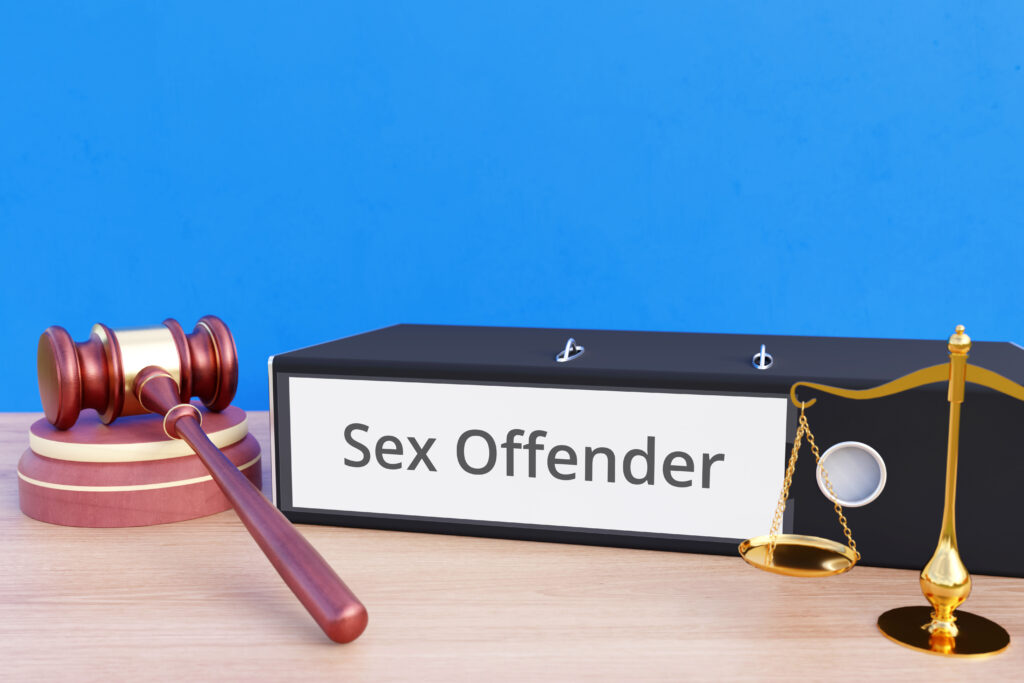Rethinking the Stigma: The Case for a More Compassionate Approach to Sex Offender Policies

In the discourse surrounding criminal justice and societal safety, there exists a particularly marginalized group whose plight is often overshadowed by widespread fear and misunderstanding. This group comprises individuals labeled as sex offenders, a designation that carries with it a heavy burden of indefinite condemnation, often disregarding the person’s efforts toward redemption or the lack of any present threat they might pose. The societal response to these individuals is frequently driven by an irrational fear that results in more harm than benefit, necessitating a critical evaluation and a shift towards a more reasoned and humane approach.
The damage inflicted by the prevailing hysteria surrounding sex offenders is profound. By continually alienating them, society denies these individuals their basic humanity and the opportunity for rehabilitation and growth. This practice is not merely unjust; it is fundamentally counterproductive, undermining the principles of fairness and second chances that are supposed to underpin our justice system.
The subject of sex offenders often evokes a visceral fear and outrage, with the term itself conjuring images of nefarious figures poised to reoffend. Yet, a thorough analysis of available data paints a significantly different picture, one that challenges entrenched misconceptions and advocates for a reassessment of current policies and attitudes.
Contrary to widespread beliefs, evidence suggests that sex offenders have among the lowest recidivism rates of all criminal categories. Recidivism, or the likelihood of reoffending after serving a sentence, varies across different types of offenders, with sex offenders consistently showing lower tendencies to reoffend than those convicted of crimes such as theft, burglary, or drug offenses. For instance, a meta-analysis published in the Journal of Consulting and Clinical Psychology, which reviewed over 29,000 cases, found that the overall recidivism rate for sex offenders was approximately 13.4%, markedly lower than that for non-sexual offenders.
Further, longitudinal research, like the study from the Minnesota Department of Corrections, provides insight into long-term trends, revealing a significant decline in recidivism rates over time. Such studies demonstrate that, after 15 years of remaining offense-free, only 3.5% of sex offenders reoffend, illustrating the potential for change and rehabilitation.
Comparative research also supports the conclusion that sex offenders pose a relatively low risk compared to other offender groups. This research often takes into account variables like age, criminal history, and socio-economic status, providing a nuanced understanding that challenges the rationale behind indiscriminate punitive measures against all sex offenders.
Advancements in risk assessment tools, such as the Static-99R, have refined our ability to predict recidivism among sex offenders. These tools, supported by research, indicate that sex offenders are, on average, less likely to reoffend than those convicted of other crimes. Factors unique to the psychological and behavioral profiles of sex offenders, including the intense stigma and shame associated with sex crimes, may act as deterrents to reoffending. Moreover, many sex offenders participate in specialized treatment programs designed to address underlying cognitive distortions and impulsivity, further reducing their risk of committing future offenses.
This evidence compellingly argues against the notion that sex offenders are inevitably doomed to reoffend. While it is crucial to ensure public safety and protect potential victims, the demonization and perpetual punishment of individuals with a history of sexual offenses can be counterproductive. Research underscores the importance of stable housing, employment opportunities, and access to mental health services in minimizing the risk of recidivism. Adopting a holistic, evidence-based approach to rehabilitation can facilitate the reintegration of these individuals into society, allowing them to contribute positively and lead meaningful lives.
It is essential, however, not to minimize the severity of sexual offenses or the trauma experienced by victims. Victims’ rights to justice, support, and acknowledgment of their suffering are paramount. Nonetheless, our collective response to sexual offenses must be grounded in empirical evidence and guided by principles of fairness, compassion, and effective risk management, ensuring a balanced approach that serves both the interests of justice and the potential for redemption.
Sex-Offender Registration
In the complex landscape of criminal justice, the implementation of public sex offender registries has emerged as a particularly contentious and divisive issue. Initially established to enhance public safety, these registries have, paradoxically, evolved into tools of perpetual punishment, significantly impacting the lives of those who have ostensibly paid their dues to society. The ramifications of these practices are profound, necessitating a critical reassessment and the exploration of more humane and efficacious alternatives.
Public sex offender registries are built upon the premise that relentless public shaming and continuous surveillance are indispensable to maintaining public safety. However, this approach engenders a host of detrimental consequences. Far from fostering a sense of accountability and facilitating rehabilitation, these registries engender a vicious cycle of stigma and alienation, profoundly impeding the ability of individuals to reintegrate into society.
One of the most harrowing consequences of public sex offender registries is the heightened vulnerability of registered individuals and their families to vigilantism and violence. Research published in the Journal of Contemporary Criminal Justice reveals that the public disclosure of registrants’ information frequently incites acts of aggression and violence against them. Alarmingly, over 20% of registered sex offenders report experiences of assault or threats. Such incidents not only imperil the lives of registrants but also contribute to a pervasive atmosphere of fear and instability within communities.
The adverse effects of public sex offender registries extend well beyond the realm of physical violence, encompassing widespread discrimination and social ostracization. Investigations conducted by the Center for Sex Offender Management indicate that approximately 90% of individuals on the registry encounter various forms of harassment and discrimination, including verbal abuse and challenges in securing employment. This pervasive discrimination inflicts considerable psychological distress on registrants and imposes significant strains on their families, who often bear the brunt of societal condemnation.
Furthermore, the relentless stigmatization and exclusion propagated by these registries precipitate dire outcomes, notably an increased incidence of suicidal ideation and attempts among registered individuals, as highlighted in the Archives of Sexual Behavior. Compounding these challenges are residency restrictions that frequently drive registrants into homelessness, exacerbating their plight, as detailed by the National Center for Biotechnology Information.
The legal underpinnings of public sex offender registries have also come under intense scrutiny, with legal scholars and courts alike questioning their fairness and overall effectiveness. Challenges to the constitutionality of these registries, especially concerning their retroactive application and the requirements for public notification, underscore the pressing need for a more balanced and evidence-informed approach to managing individuals with a history of sexual offenses.
Expanding upon these concerns, it’s essential to recognize that the efficacy of public sex offender registries in preventing recidivism and enhancing community safety remains a subject of ongoing debate. Studies, such as those conducted by the U.S. Department of Justice, have called into question the assumption that public access to registrant information directly correlates with reduced rates of sexual reoffending. Furthermore, the societal costs associated with the maintenance and enforcement of these registries—including the diversion of substantial law enforcement resources away from proactive crime prevention measures—merit serious consideration.
In light of these findings, the case for reevaluating the role and impact of public sex offender registries grows increasingly compelling. Alternatives that prioritize rehabilitation, support reintegration efforts, and rely on risk-based assessments to tailor monitoring and restrictions more appropriately offer a path forward that respects the dignity of all individuals while effectively safeguarding public safety. Such approaches underscore the importance of evidence-based policies that recognize the potential for change and redemption, challenging the prevailing narrative that those who have committed sexual offenses are beyond the reach of rehabilitation.
Human Rights Watch has highlighted significant concerns about the efficacy and impact of laws targeting individuals convicted of sex offenses in a newly released report. Titled “No Easy Answers: Sex Offender Laws in the United States,” this 146-page document represents the first in-depth analysis of sex offender policies in the U.S., evaluating their implications for public safety, as well as the repercussions for those convicted and their families. Over a two-year investigative period, Human Rights Watch engaged in more than 200 interviews with a broad spectrum of individuals, including victims of sexual violence and their families, former offenders, law enforcement personnel, government officials, treatment providers, researchers, and advocates for child safety.
The organization emphasizes that while the goal of protecting children from sexual abuse is paramount, the current legislative framework is flawed and ineffective. Jamie Fellner, director of the US program at Human Rights Watch, asserts that the laws in place are not only ill-conceived but also inadequately formulated, calling for a more nuanced and comprehensive strategy to child protection than what political leaders have thus far endorsed.
A concerning aspect of these laws is their broad scope, encompassing a wide array of sexual crimes from severe offenses to consensual acts among teenagers, without adequately assessing the future risk posed by the individuals convicted. The unrestricted public access to online sex-offender registries, without any necessity for disclosure, subjects former offenders to potential vigilantism and illegal actions by others. Moreover, there is scant evidence suggesting that such community notification measures effectively prevent sexual violence. Residency restrictions, which effectively exile former offenders from communities, disrupt their lives significantly, distancing them from their homes, families, employment opportunities, and access to treatment, while also complicating law enforcement efforts to monitor them. These restrictions are not only detrimental to the individuals affected but also counterproductive to broader public safety objectives.
The report also challenges the prevalent public perception that children are predominantly at risk from strangers with histories of sexual offenses, pointing out that most child sexual abuse is perpetrated by family members or trusted individuals, often without any prior convictions for such crimes.
Additionally, the pervasive belief that sex offenders are invariably at a high risk of reoffending is contradicted by authoritative research, which shows that the majority of adult offenders do not reoffend, and that treatment programs can be effective, even for those who have committed severe sex crimes.
Sarah Tofte, a researcher with Human Rights Watch’s US program, criticizes the lack of rigorous examination by lawmakers before the enactment of these sex offender laws, accusing them of propagating myths about sex offenders rather than addressing the complex realities of sexual violence against children. The report by Human Rights Watch underscores the need for legislative reform to align sex offender laws with evidence-based practices that genuinely enhance public safety while respecting the rights and rehabilitation prospects of those convicted of sex offenses.
In conclusion, the current practices surrounding public sex offender registries demand a thoughtful, informed, and nuanced discussion that considers both the needs of public safety and the rights and potential for rehabilitation of those subject to these registries. By adopting a more balanced, evidence-driven approach, it is possible to forge a criminal justice system that is both just and effective, aligning with the broader goals of societal protection and the humane treatment of all individuals.
Recommend0 recommendationsPublished in Legal Affairs, Opinion, Social Issues




Responses